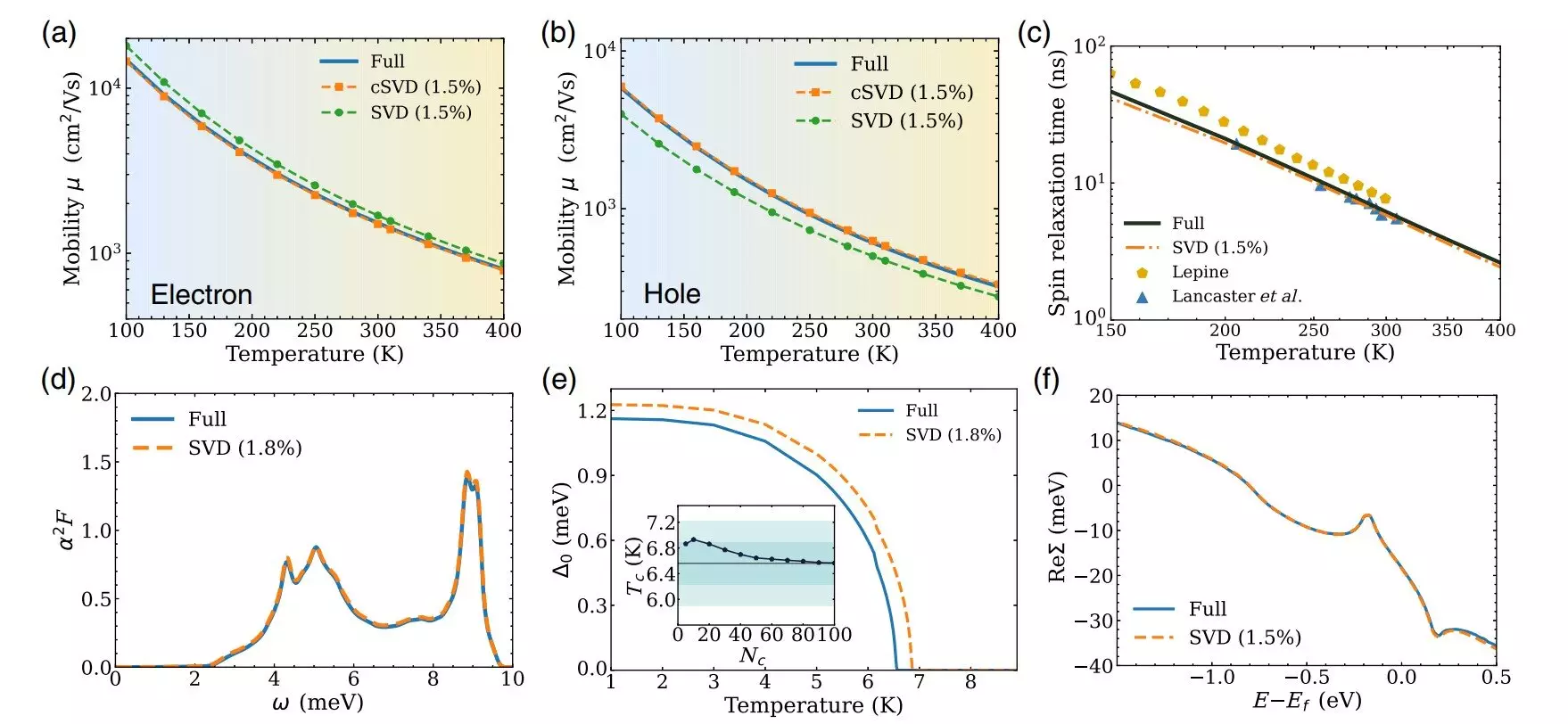In the field of materials science, researchers are constantly seeking to understand the intricacies of how electrons interact and move within new materials and devices. One key question that scientists often grapple with is whether electrical current will flow smoothly through a material or if there is a specific temperature at which a material will become superconducting. Additionally, understanding how long the quantum state of an electron spin can be preserved in electronic and quantum devices is crucial for developing cutting-edge technologies.
Recently, a team of researchers at Caltech has made a breakthrough discovery that has the potential to revolutionize the way electron interactions are calculated in materials. By developing a data-driven method that simplifies computational matrices, these researchers have significantly accelerated the process of understanding electron-phonon interactions in materials while maintaining accuracy. Notably, this new approach has enabled calculations to be sped up by a factor of 50 or more, opening up possibilities for exploring more complex materials and devices.
Traditionally, materials physicists have employed two main approaches to study materials at a fundamental level. One method involves building minimal models to gain a qualitative understanding of materials, while the other relies on first principles methods that use quantum mechanical calculations for quantitative accuracy. The team at Caltech has found a middle ground by applying singular value decomposition (SVD) to electron-phonon interactions, effectively distilling key information and generating minimal models of material interactions.
By utilizing the SVD technique, researchers can separate electronic and vibrational components in matrices of electron-phonon interactions to identify the most significant interactions. This process allows for the elimination of extraneous data, leading to faster and more efficient calculations. The researchers have demonstrated that by retaining only a small fraction of singular values, typically 1 to 2%, the results remain nearly as accurate as the full calculation. This streamlined approach not only reduces computing time and memory usage but also provides researchers with valuable insights into dominant interactions within materials.
The compression of matrices related to electron-phonon interactions using the SVD method has wide-ranging implications for materials research. By accurately predicting properties such as charge transport, spin relaxation times, and the transition temperature of superconductors, this approach offers a more efficient way to analyze materials. Additionally, the researchers are working to incorporate the new SVD method into open-source software tools, enabling the wider scientific community to benefit from accelerated predictions of material properties.
The innovative approach developed by the Caltech research team marks a significant advancement in the field of materials science. By streamlining electron-phonon interactions and simplifying complex calculations, researchers have unlocked new possibilities for studying materials at a fundamental level. As this method continues to be refined and integrated into existing tools, the future of materials research looks promising with faster and more accurate predictions of material properties.


Leave a Reply